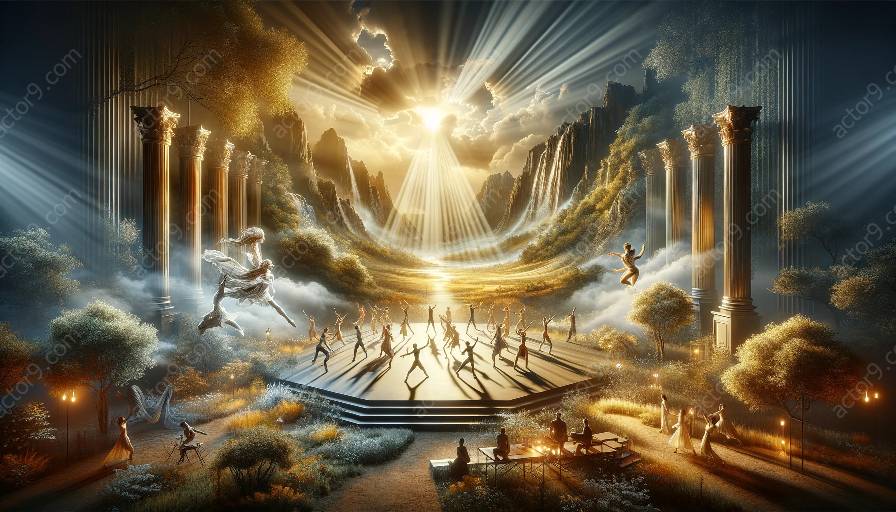Physical theatre is an expressive art form that combines movement, gesture, and storytelling to convey emotions and narratives without relying on spoken language. One of the essential elements in enhancing the impact of physical theatre performances is lighting. Lighting plays a crucial role in setting the mood, highlighting key elements, and creating dramatic effects that enrich the audience's experience. This article aims to explore the significance of lighting in physical theatre and the various techniques used to achieve impactful and captivating results.
The Impact of Lighting in Physical Theatre
Lighting serves as a powerful tool in physical theatre, influencing the overall atmosphere and guiding the audience's focus. It has the ability to transform the performance space, intensify emotions, and enhance the visual dynamics of the production. Through strategic lighting design, physical theatre performances can evoke specific moods, evoke emotions, and emphasize the narrative elements without the use of spoken words.
Essential Lighting Techniques for Dramatic Effects
There are several lighting techniques commonly used in physical theatre to create dramatic effects and enhance the visual impact. These techniques are carefully employed to support the narrative, accentuate movement, and evoke powerful responses from the audience. Some of the prominent lighting techniques include:
- Spotlighting: Spotlighting is a focused beam of light that directs the audience's attention to specific performers or actions on stage. It creates a sense of isolation and intensifies the dramatic impact of the highlighted elements.
- Chiaroscuro: Chiaroscuro lighting involves a stark contrast between light and shadow, creating a heightened sense of drama and depth. This technique is particularly effective in accentuating the performers' physicality and adding dimension to their movements.
- Color Washes: Using colored lights to bathe the stage in specific hues can dramatically alter the mood and tone of the performance. Different colors evoke varying emotions and perceptions, allowing for the portrayal of diverse atmospheres and psychological landscapes.
- Silhouetting: By positioning the light source behind the performers, silhouetting creates striking outlines of their bodies, amplifying their physical gestures and expressions. This technique adds a layer of mystery and intensity to the visual storytelling.
The Art of Blend
Successful lighting design in physical theatre often involves a seamless blend of these techniques to achieve a cohesive and immersive visual experience. A skillful lighting designer understands how to intertwine various lighting elements to support the narrative arc, highlight pivotal moments, and engage the audience on a sensory level.
The Emotional Connection
When employed thoughtfully, lighting can forge a profound emotional connection between the performers and the audience. It has the capacity to amplify the nuances of physical expressions, underscore the performers' vulnerability, and evoke empathy and introspection among spectators.
The Audience Experience
The impact of lighting in physical theatre extends to the audience, shaping their interpretation and engagement with the performance. Well-executed lighting not only enhances the visual appeal but also immerses the audience in the unfolding narrative, eliciting visceral responses and enhancing their overall theatrical experience.
In Conclusion
Lighting techniques are an integral part of the storytelling process in physical theatre, working in harmony with movement and expression to create powerful and evocative performances. By leveraging different lighting strategies, physical theatre productions can achieve a heightened level of dramatic impact, effectively communicate non-verbal narratives, and captivate audiences through visually compelling storytelling.




































